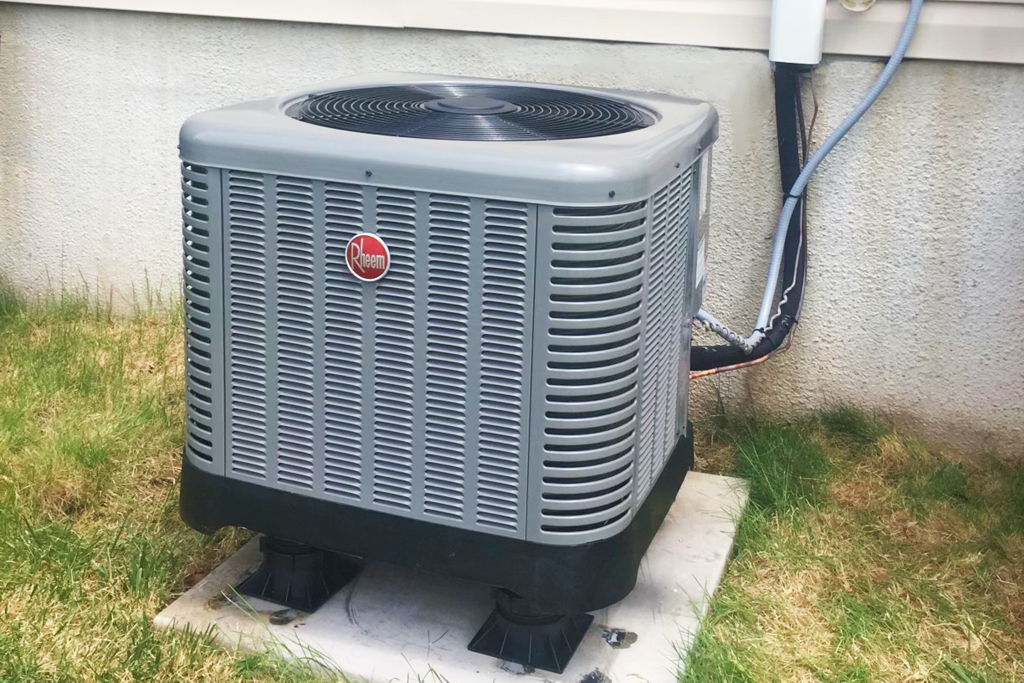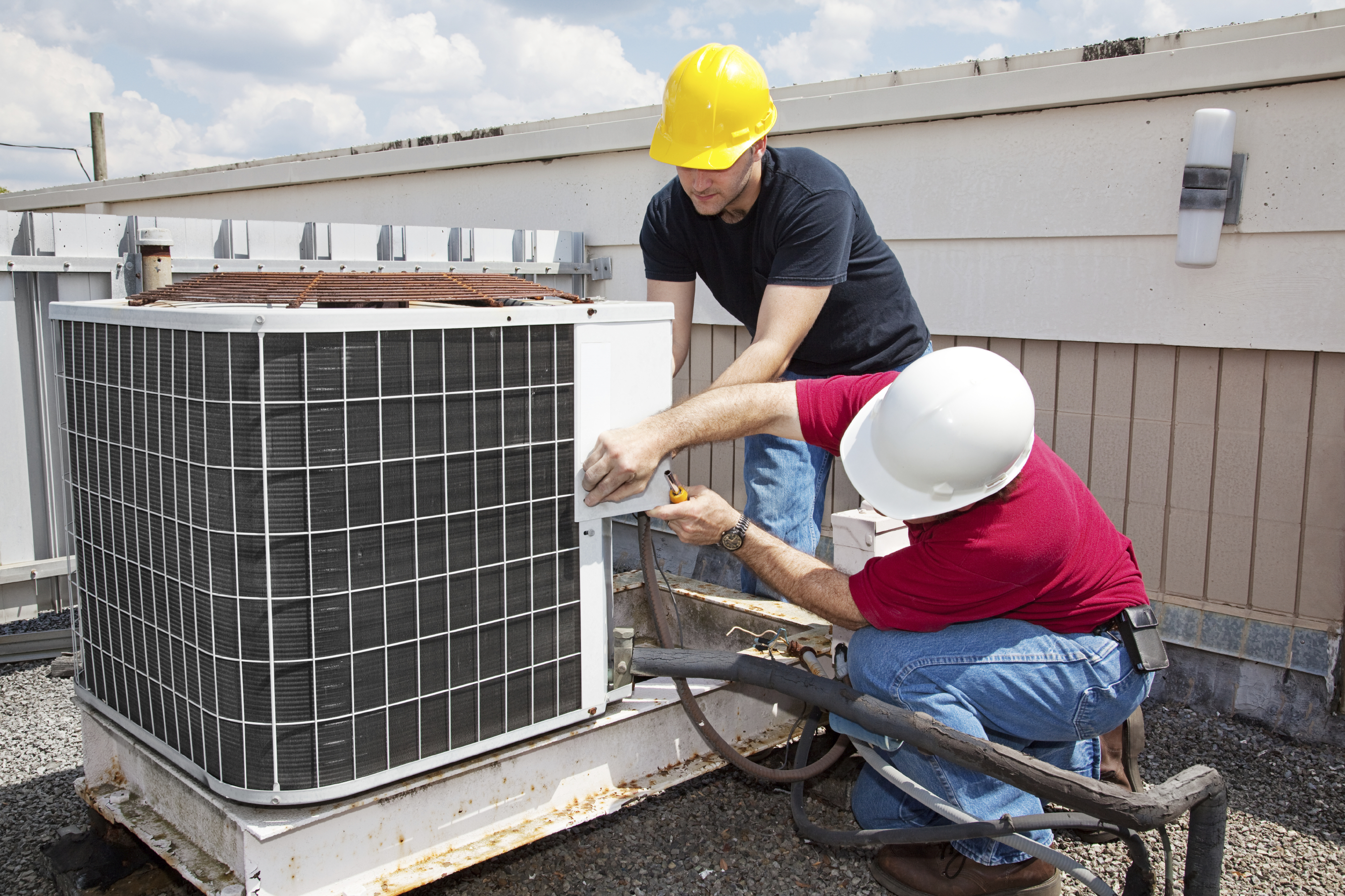Air Conditioning Installation: DIY vs. Professional Services

Designing With Comfort in Mind: Integrating A/c in Style
When it concerns making building rooms, the old claiming 'kind adheres to feature' holds true. However have you ever before took into consideration exactly how incorporating air conditioning into architecture can boost convenience and efficiency all at once?
The smooth blend of cooling systems within the structure of a structure not only influences the owners' well-being yet also influences the overall sustainability of the framework. As you check out the complex relationship in between design and cooling, a globe of cutting-edge services and sophisticated modern technologies awaits your discovery.
Key Takeaways
- Energy-efficient systems enhance comfort and sustainability.
- Integrated air conditioning enhances interior air high quality.
- Stabilizing looks and capability makes certain ideal layout.
- Future fads focus on wise, lasting cooling services.
Importance of Integrated Air Conditioning
When creating areas, incorporating air conditioning is important for making certain the best convenience and performance. Energy performance plays an important duty in the layout procedure, as it not just reduces operational expenses however also minimizes the ecological influence of the structure. By integrating energy-efficient cooling systems, you can produce a sustainable and cost-effective service that profits both the residents and the world.
On top of that, interior air high quality is another vital variable to think about when designing with incorporated cooling. Proper air flow and purification systems assist preserve a healthy interior atmosphere by decreasing toxins and allergens. This results in improved owner health and wellness and productivity. When choosing cooling systems, prioritize those that provide sophisticated filtering modern technologies to boost the overall indoor air high quality.
Factors Affecting Style Decisions
Integrating a/c into building designs requires cautious factor to consider of various variables that influence design decisions. When incorporating a/c systems, sustainability factors to consider are critical to lower the structure's ecological influence. User experience plays a considerable duty in identifying the efficiency and contentment with the cooling system.
- Power Performance: Sustainable style techniques intend to reduce energy consumption, which not just profits the setting however also lowers functional expenses for the structure owner.
- Indoor Air High Quality: Offering a comfy and healthy interior setting boosts the general customer experience, advertising performance and health.
- Aesthetics and Combination: Incorporating air conditioning systems flawlessly right into the building style makes certain that capability does not compromise the visual charm of the area, improving customer contentment and overall building aesthetics.
Reliable Cooling Down Approaches for Buildings
To optimize cooling down performance in structures, take into consideration integrating easy design strategies along with air conditioning systems. Easy air conditioning methods can substantially lower the requirement for mechanical cooling, resulting in even more sustainable remedies for maintaining comfy interior temperatures. AC unit repair costs Design features such as shading gadgets, natural air flow systems, and thermal mass can help regulate temperatures without counting entirely on energy-intensive air conditioning. By purposefully positioning windows to maximize cross ventilation or utilizing reflective roof products to reduce solar warm gain, you can harness the power of nature to cool your building effectively.
Along with passive techniques, applying lasting options like green roofing systems or living wall surfaces can additionally boost cooling down effectiveness by giving insulation and reducing warm absorption. These features not just help in keeping comfortable interior temperature levels however additionally contribute to a greener setting. By incorporating passive cooling strategies with sustainable options, you can produce an extra energy-efficient and environmentally friendly building style that focuses on both convenience and preservation.
Balancing Visual Appeals and Functionality
Take into consideration the harmonious combination of aesthetic elements with useful aspects in your architectural layout to guarantee a well balanced and impactful outcome. When incorporating air conditioning systems right into your structure design, striking a balance in between appearances and functionality is vital to creating rooms that not just look great however also provide ideal comfort for residents.
To attain this equilibrium, maintain the adhering to points in mind:
- Mix the System with the Surroundings: See to it that the a/c units or vents perfectly incorporate with the general aesthetic of the area, whether with concealed positioning, decorative covers, or matching colors.
- Prioritize User Experience: Layout the air flow and temperature level control systems in a manner that focuses on the convenience and health of the owners. Take into consideration elements such as air distribution, sound degrees, and simplicity of use to enhance the total user experience. Ductless mini-split installation
- Incorporate Sustainable Practices: Go with energy-efficient cooling services that not only add to the visual allure of the structure yet additionally advertise sustainability and decrease environmental effect.

Future Trends in Architectural Air Conditioning

As you imagine the future of building design, staying abreast of arising air conditioning patterns comes to be pivotal for boosting both kind and feature within your tasks.
The assimilation of clever innovations into architectural air conditioning systems is set to change the way buildings are cooled down. These systems use data and automation to optimize power usage, offering customized comfort while lowering ecological effect.
Lasting solutions are likewise forming the future of building air conditioning. From passive style methods that optimize all-natural air flow to cutting-edge air conditioning materials that decrease the requirement for traditional cooling, sustainability is at the leading edge of cooling technologies. Designers are progressively including environment-friendly roofs, shading aspects, and thermal mass into their styles to produce even more energy-efficient air conditioning systems.
Often Asked Inquiries
Just How Does A/c Effect the Total Sustainability and Power Effectiveness of a Structure Design?
When you incorporate air conditioning into structure design, it affects sustainability and power performance. Power consumption can increase as a result of a/c usage, influencing building efficiency. This increased power demand can have unfavorable ecological effects, minimizing general sustainability.
To reduce these results, consider integrating energy-efficient heating and cooling systems, appropriate insulation, and passive cooling techniques. Stabilizing convenience with power effectiveness is essential for producing lasting architectural styles.
Exist Any Rules or Certifications That Architects Need to Consider When Integrating Air Conditioning Into Their Styles?
When incorporating cooling right into your styles, it's important to consider governing needs like building ordinance and accreditation standards for power efficiency. Meeting these standards assurances that your task straightens with market finest techniques and environmental goals.
Familiarizing on your own with these policies will assist you in creating lasting layouts that prioritize comfort while additionally lowering power intake. Stay educated and compliant to supply projects that are both comfortable and eco-friendly.
Can the Placement of Cooling Units Affect the General Comfort and Functionality of an Area?
When it concerns a/c systems, placement matters a lot for your room's comfort and capability. Air blood circulation is crucial, so avoid obstructing vents or putting units in dilemmas.
Consider exactly how sound pollution can impact your environment and aim for a cosmetically pleasing setup that mixes perfectly with your spatial design.
Pay attention to where you place these devices to ensure optimum convenience and efficiency throughout your space.
What Are Some Cutting-edge Technologies or Products That Can Be Used to Enhance A/c Systems in Modern Style?
To improve air conditioning systems in contemporary architecture, you can discover clever controls and sustainable materials. Easy cooling techniques and utilizing thermal mass are innovative means to enhance effectiveness and convenience.
Just How Can Architects Ensure That the Style of A/c Equipments Enhances the General Visual of a Building While Still Prioritizing Performance and Convenience?
To guarantee the design of air conditioning systems matches a structure's visual, focus on visual combination and design consistency. Incorporate energy-efficient innovations for functionality. Stabilizing aesthetic appeals and capability improves resident comfort.
Highlight smooth assimilation of a/c elements right into the architectural design. By focusing on both visual appeals and energy effectiveness, architects can develop an area that's visually enticing, comfortable, and environmentally friendly.
Conclusion
Overall, when making with comfort in mind, incorporating cooling in style is crucial. By considering aspects such as effective air conditioning strategies, stabilizing looks and performance, and staying ahead of future fads, designers can develop areas that aren't only aesthetically attractive but additionally comfy for residents.
It is necessary to focus on the well-being and convenience of those that'll be making use of the space, and incorporated air conditioning plays a crucial role in accomplishing this objective.
